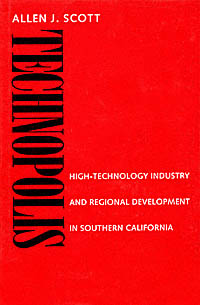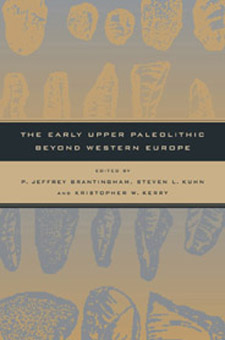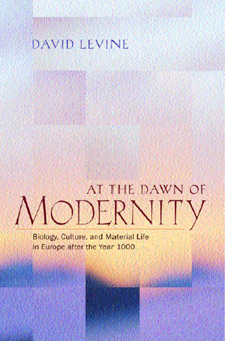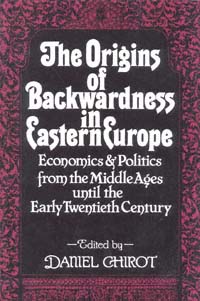formerly eScholarship Editions


|
|
|
|
Your request for similar items found 20 book(s). | Modify Search | Displaying 1 - 20 of 20 book(s) | |
| 1. |  | Title: Technopolis: high-technology industry and regional development in southern California Author: Scott, Allen John Published: University of California Press, 1994 Subjects: Urban Studies | Geography | Politics Publisher's Description: Technopolis is a timely theoretical and empirical investigation of the world's largest high-technology industrial complex - Southern California. Allen Scott provides a new conceptual framework for understanding urban and regional growth processes based on a combination of inter-industrial, labor market, and geographical factors. He presents case studies and original data on three major industries that have become synonymous with Southern California: aircraft and parts, missiles and space equipment, and electronics. The business community will be particularly interested in Scott's diagnosis of post-Cold War economic ills and his suggestions for possible remedies.In good times or bad, knowledge of how Southern California's high-tech industry and regional development have interacted in the past and might interact in the future will be invaluable for regional and economic planners everywhere. [brief] Similar Items |
| 2. |  | Title: The elusive embryo: how women and men approach new reproductive technologies Author: Becker, Gaylene Published: University of California Press, 2000 Subjects: Anthropology | Cultural Anthropology | Sociology | Gender Studies | Medical Anthropology | Medicine | Women's Studies | Science Publisher's Description: In the first book to examine the industry of reproductive technology from the perspective of the consumer, Gay Becker scrutinizes the staggering array of medical options available to women and men with fertility problems and assesses the toll - both financial and emotional - that the quest for a biological child often exacts from would-be parents. Becker interviewed hundreds of people over a period of years; their stories are presented here in their own words. Absorbing, informative, and in many cases moving, these stories address deep-seated notions about gender, self-worth, and the cultural ideal of biological parenthood. Becker moves beyond people's personal experiences to examine contemporary meanings of technology and the role of consumption in modern life. What emerges is a clear view of technology as culture, with technology the template on which issues such as gender, nature, and the body are being rewritten and continuously altered. The Elusive Embryo chronicles the history and development of reproductive technology, and shows how global forces in consumer culture have contributed to the industry's growth. Becker examines how increasing use of reproductive technology has changed ideas about "natural" pregnancy and birth. Discussing topics such as in vitro fertilization, how men and women "naturalize" the use of a donor, and what happens when new reproductive technologies don't work, Becker shows how the experience of infertility has become increasingly politicized as potential parents confront the powerful forces that shape this industry. The Elusive Embryo is accessible, well written, and well documented. It will be an invaluable resource for people using or considering new reproductive technologies as well as for social scientists and health professionals. [brief] Similar Items |
| 3. |  | Title: Averting catastrophe: strategies for regulating risky technologies Author: Morone, Joseph G Published: University of California Press, 1988 Subjects: Environmental Studies | History and Philosophy of Science | Politics Publisher's Description: Chernobyl, Bhopal, and Love Canal are symbols of the potentially catastrophic risks that go hand in hand with much modern technology. This volume is a non-partisan study of the imperfect but steadily developing system for containing the risks of such technologies as chemicals, nuclear power, and gen . . . [more] Similar Items |
| 4. |  | Title: The early Upper Paleolithic beyond Western Europe Author: Brantingham, P. Jeffrey 1970- Published: University of California Press, 2004 Subjects: Anthropology | Archaeology | European History | European History | Middle Eastern History Publisher's Description: This volume brings together prominent archaeologists working in areas outside Western Europe to discuss the most recent evidence for the origins of the early Upper Paleolithic and its relationship to the origin of modern humans. With a wealth of primary data from archaeological sites and regions that have never before been published and discussions of materials from difficult-to-find sources, the collection urges readers to reconsider the process of modern human behavioral origins. Archaeological evidence continues to play a critical role in debates over the origins of anatomically modern humans. The appearance of novel Upper Paleolithic technologies, new patterns of land use, expanded social networks, and the emergence of complex forms of symbolic communication point to a behavioral revolution beginning sometime around 45,000 years ago. Until recently, most of the available evidence for this revolution derived from Western European archaeological contexts that suggested an abrupt replacement of Mousterian Middle Paleolithic with Aurignacian Upper Paleolithic adaptations. In the absence of fossil association, the behavioral transition was thought to reflect the biological replacement of archaic hominid populations by intrusive modern humans. The contributors present new archaeological evidence that tells a very different story: The Middle-Upper Paleolithic transitions in areas as diverse as the Levant, Eastern-Central Europe, and Central and Eastern Asia are characterized both by substantial behavioral continuity over the period 45,000-25,000 years ago and by a mosaic-like pattern of shifting adaptations. Together these essays will enliven and enrich the discussion of the shift from archaic to modern behavioral adaptations. [brief] Similar Items |
| 5. |  | Title: At the dawn of modernity: biology, culture, and material life in Europe after the year 1000 Author: Levine, David 1946- Published: University of California Press, 2001 Subjects: Sociology | Social Theory | European History | European Studies Publisher's Description: Looking at a neglected period in the social history of modernization, David Levine investigates the centuries that followed the year 1000, when a new kind of society emerged in Europe. New commercial routines, new forms of agriculture, new methods of information technology, and increased population densities all played a role in the prolonged transition away from antiquity and toward modernity. At the Dawn of Modernity highlights both "top-down" and "bottom-up" changes that characterized the social experience of early modernization. In the former category are the Gregorian Reformation, the imposition of feudalism, and the development of centralizing state formations. Of equal importance to Levine's portrait of the emerging social order are the bottom-up demographic relations that structured everyday life, because the making of the modern world, in his view, also began in the decisions made by countless men and women regarding their families and circumstances. Levine ends his story with the cataclysm unleashed by the Black Death in 1348, which brought three centuries of growth to a grim end. [brief] Similar Items |
| 6. |  | Title: The dynamics of the breakthrough in Eastern Europe: the Polish experience Author: Staniszkis, Jadwiga Published: University of California Press, 1991 Subjects: Politics | European History | Sociology Publisher's Description: Understanding the dramatic political, social, and economic changes that have taken place in Poland in the mid-1980s is one key to predicting the future of the communist bloc. Jadwiga Staniszkis, an influential, internationally known expert on contemporary trends in Eastern Europe, provides an insider's analysis that deserves the attention of all scholars interested in the region.Staniszkis presents the breakthrough of 1989 as a consequence not only of systemic contradictions within socialism but also of a series of chance events. These events include unique historical circumstances such as the emergence of the "globalist" faction in Mosow, with its new, world-system perception of crisis, and the discovery of the round-table technique as a productive ritual of communication, imitated all over Eastern Europe. After describing the development, collapse, and reorganization of a "new center" in Poland in 1989-1990, she discusses the first attempt at privatizing the economy. Her analysis of the dilemmas accompanying breakthrough and transition is an invaluable guide to the challenges that face both capitalism and democracy in Eastern Europe. [brief] Similar Items |
| 7. |  | Title: The enigma of 1989: the USSR and the liberation of Eastern Europe Author: Lévesque, Jacques Published: University of California Press, 1997 Subjects: Politics | History | European History | Russian and Eastern European Studies Publisher's Description: The Soviet external empire fell in 1989 virtually without bloodshed. The domino-like collapse of the communist regimes of Eastern Europe was not anticipated by political experts in either the East or the West. Most surprising of all was the Soviet Union's permissive reactions to the secession. For the first time in modern history, such an epochal upheaval could take place not only without war but also without major international tensions.This book is the first comprehensive scholarly attempt to elucidate Soviet behavior toward Eastern Europe in 1989. Jacques Lévesque thoroughly analyses the policies of the USSR toward Eastern Europe during the Gorbachev era and clarifies the goals that underpinned these policies.Based on interviews with political leaders and exhaustive research in Russia, Czechoslovakia, Hungary, Poland, and the other ex-Warsaw Pact countries, this book traces the nuances of each country's case as a set of continually changing, mutually reinforcing causes and effects. [brief] Similar Items |
| 8. |  | Title: Telematic embrace: visionary theories of art, technology, and consciousness Author: Ascott, Roy Published: University of California Press, 2003 Subjects: Art | Art Theory | Electronic Media Publisher's Description: Long before e-mail and the Internet permeated society, Roy Ascott, a pioneering British artist and theorist, coined the term "telematic art" to describe the use of online computer networks as an artistic medium. In Telematic Embrace Edward A. Shanken gathers, for the first time, an impressive compilation of more than three decades of Ascott's philosophies on aesthetics, interactivity, and the sense of self and community in the telematic world of cyberspace. This book explores Ascott's ideas on how networked communication has shaped behavior and consciousness within and beyond the realm of what is conventionally defined as art. Telematics, a powerful marriage of computers and telecommunication, made technologies we now take for granted - such as e-mail and automated teller machines (ATMs) - part of our daily life, and made art a more interactive form of expression. Telematic art challenges traditional relationships between artist, artwork, and audience by allowing nonlocal audiences to influence the emergent qualities of the artwork, which consists of the ebb and flow of electronic information. These essays constitute a unique archaeology of ideas, tracing Ascott's meditations on the formation of consciousness through the intertwined cultural histories of art and technology from the 1960s to the present. Shanken's introduction situates Ascott's work within a history of ideas in art, technology, and philosophy. Given the increasing role of the Internet and the World Wide Web in the creation of commerce and community at the dawn of this new millennium, scholars, students, laypeople, policymakers, and artists will find this collection informative and thought-provoking. [brief] Similar Items |
| 9. |  | Title: Technology and gender: fabrics of power in late imperial China Author: Bray, Francesca Published: University of California Press, 1997 Subjects: Anthropology | History | China | Women's Studies Publisher's Description: In this feminist history of eight centuries of private life in China, Francesca Bray inserts women into the history of technology and adds technology to the history of women. Bray takes issue with the Orientalist image that traditional Chinese women were imprisoned in the inner quarters, deprived of freedom and dignity, and so physically and morally deformed by footbinding and the tyrannies of patriarchy that they were incapable of productive work. She proposes a concept of gynotechnics , a set of everyday technologies that define women's roles, as a creative new way to explore how societies translate moral and social principles into a web of material forms and bodily practices.Bray examines three different aspects of domestic life in China, tracing their developments from 1000 to 1800 A.D. She begins with the shell of domesticity, the house, focusing on how domestic space embodied hierarchies of gender. She follows the shift in the textile industry from domestic production to commercial production. Despite increasing emphasis on women's reproductive roles, she argues, this cannot be reduced to childbearing. Female hierarchies within the family reinforced the power of wives, whose responsibilities included ritual activities and financial management as well as the education of children. [brief] Similar Items |
| 10. |  | Title: Decades of crisis: Central and Eastern Europe before World War II Author: Berend, T. Iván (Tibor Iván) 1930- Published: University of California Press, 1998 Subjects: History | European History | European Studies | Russian and Eastern European Studies | Economics and Business Publisher's Description: Only by understanding Central and Eastern Europe's turbulent history during the first half of the twentieth century can we hope to make sense of the conflicts and crises that have followed World War II and, after that, the collapse of Soviet-controlled state socialism. Ivan Berend looks closely at the fateful decades preceding World War II and at twelve countries whose absence from the roster of major players was enough in itself, he says, to precipitate much of the turmoil.As waves of modernization swept over Europe, the less developed countries on the periphery tried with little or no success to imitate Western capitalism and liberalism. Instead they remained, as Berend shows, rural, agrarian societies notable for the tenacious survival of feudal and aristocratic institutions. In that context of frustration and disappointment, rebellion was inevitable. Berend leads the reader skillfully through the maze of social, cultural, economic, and political changes in Hungary, Czechoslovakia, Yugoslavia, Poland, Romania, Bulgaria, Albania, Austria, Latvia, Lithuania, Estonia, and the Soviet Union, showing how every path ended in dictatorship and despotism by the start of World War II. [brief] Similar Items |
| 11. |  | Title: State capitalism and working-class radicalism in the French aircraft industry Author: Chapman, Herrick Published: University of California Press, 1990 Subjects: History | European History | Politics | Technology and Society | French Studies Publisher's Description: In the 1950s and 1960s France experienced an economic miracle. As the state's role expanded with efforts to create a more modern economy, however, labor relations remained more volatile and workers more radical than elsewhere in western Europe. Herrick Chapman argues in this important new book that state capitalism and working-class radicalism went hand-in-hand and that both have antecedents in the tumultuous events of the 1930s and 1940s.The author focuses on a key industry - aviation - which held center stage in France from the Great Depression to the Cold War. While manufacturers and state officials struggled to modernize, the aviation industry became a bastion of the Communist Party and an arena of combat where workers, employers, and officials promoted competing visions of industrial reform. This gave rise to a new environment where state intervention and working-class radicalism became mutually reinforcing, and by the postwar era a peculiarly contentious form of industrial politics had become firmly entrenched.Using local and national archives, the author analyzes not only how an industry transformed but also how people reacted to the Popular Front, the defeat of 1940, the Nazi Occupation, and the onset of the Cold War. He also sheds light on such central themes in modern French history as the style of entrepreneurship, the sources of state interventionism, the response of workers to technological change and the nature of the Communist movement. [brief] Similar Items |
| 12. |  | Title: What machines can't do: politics and technology in the industrial enterprise Author: Thomas, Robert Joseph 1952- Published: University of California Press, 1994 Subjects: Economics and Business | Politics | Sociology | Technology and Society Publisher's Description: Virtually every manufacturing company has plans for an automated "factory of the future." But Robert J. Thomas argues that smart machines may not hold the key to an industrial renaissance. In this provocative and enlightening book, he takes us inside four successful manufacturing enterprises to reveal the social and political dynamics that are an integral part of new production technology. His interviews with nearly 300 individuals, from top corporate executives to engineers to workers and union representatives, give his study particular credibility and offer surprising insights into the organizational power struggles that determine the form and performance of new technologies.Thomas urges managers not to put blind hopes into smarter machines but to find smarter ways to organize people. As U.S. companies battle for survival in an era of growing global competition, What Machines Can't Do is an invaluable treatise on the ways we organize work. While its call for change is likely to be controversial, it will also attract anyone who wishes to understand the full impact of new technology on jobs, organizations, and the future of the industrial enterprise. [brief] Similar Items |
| 13. |  | Title: Technology and scholarly communication Author: Ekman, Richard Published: University of California Press, 1999 Subjects: Media Studies | Technology and Society | Library Science | Reference | Economics and Business | Electronic Media Publisher's Description: Electronic publishing has been gaining ground in recent years and is now a recognized part of the digital world. In the most comprehensive assessment of electronic publishing to date, thirty-one scholars, librarians, and publishers focus specifically on scholarly publishing. They analyze a number of case studies and offer original insights on a range of topics, including the financial costs involved, market forces, appropriate technological standards, licensing issues, intellectual property, copyright and associated user rights, and the changing roles of researchers, publishers, and librarians.The editors begin with an overview of scholarly communication and develop a novel interpretation of the important role that technology now plays. Many of the following chapters are based on actual electronic publishing projects in the sciences, social sciences, and humanities, so the evidence and data are drawn from real-life experiences. Of special value are the attempts to measure costs and patterns of usage of electronic publishing and digital libraries.Electronic publishing has moved well past the experimental stage, and with numerous projects under way this seems an appropriate time to assess its impact on the academic world, from teaching to research to administration. [brief] Similar Items |
| 14. |  | Title: The origins of backwardness in Eastern Europe: economics and politics from the Middle Ages until the early twentieth century Author: Chirot, Daniel Published: University of California Press, 1989 Subjects: History | European History | Politics | Economics and Business Publisher's Description: Reaching back centuries, this study makes a convincing case for very deep roots of current Eastern European backwardness. Its conclusions are suggestive for comparativists studying other parts of the world, and useful to those who want to understand contemporary Eastern Europe's past. Like the rest of the world except for that unique part of the West which has given us a false model of what was "normal," Eastern Europe developed slowly. The weight of established class relations, geography, lack of technological innovation, and wars kept the area from growing richer.In the nineteenth century the West exerted a powerful influence, but it was political more than economic. Nationalism and the creation of newly independent aspiring nation-states then began to shape national economies, often in unfavorable ways.One of this book's most important lessons is that while economics may limit the freedom of action of political players, it does not determine political outcomes. The authors offer no simple explanations but rather a theoretically complex synthesis that demonstrates the interaction of politics and economics. [brief] Similar Items |
| 15. |  | Title: Antonia Canova and the politics of patronage in revolutionary and Napoleonic Europe Author: Johns, Christopher M. S Published: University of California Press, 1998 Subjects: Art | Art History | European Studies | European History Publisher's Description: The Venetian sculptor Antonio Canova (1757-1822) was Europe's most celebrated artist from the end of the ancien régime to the early years of the Restoration, an era when the traditional relationship between patrons and artists changed drastically. Christopher M. S. Johns's refreshingly original study explores a neglected facet of Canova's career: the effects of patrons, patronage, and politics on his choice of subjects and manner of working. While other artists produced art in the service of the state, Canova resisted the blandishments of the political powers that commissioned his works.Johns uses letters, diaries, and biographies to establish a political personality for Canova as an individual and an artist of international reputation. Though he had patrons as diverse as the pope, Napoleon, the Austrian Hapsburgs, the Prince Regent of Great Britain, and the Republic of Venice, Canova remained steadily employed and did so without controversy. A conservative and a Catholic, he devised a strategy that enabled him to work for patrons who were avowed enemies while remaining true to the cultural and artistic heritage of his Italian homeland. Using myth and funerary images and avoiding portraiture, he disguised the meanings behind his works and thus avoided their being identified with any political purpose.Johns greatly enhances our understanding of Canova's place in European art and political history, and in showing the influence of censorship, display, visual narrative, and propaganda, he highlights issues as contentious today as they were in Canova's time. [brief] Similar Items |
| 16. |  | Title: Technology as freedom: the New Deal and the electrical modernization of the American home Author: Tobey, Ronald C Published: University of California Press, 1997 Subjects: History | American Studies | Technology and Society | United States History Publisher's Description: Before 1930, the domestic market for electrical appliances was segmented, but New Deal policies and programs created a true mass market, reshaping the electrical and housing markets and guiding them toward mandated social goals. The New Deal identified electrical refrigeration as a key technology to reform domestic labor, raise family health, and build family assets. New Deal incentives led to nearly fifty percent of Title I National Housing Act loans being used to buy electric refrigerators in the 1930s. New Deal policies ultimately created the mass commodity culture of home-owning families that typified the conservative 1950s. [brief] Similar Items |
| 17. |  | Title: Making Muslim space in North America and Europe Author: Metcalf, Barbara Daly 1941- Published: University of California Press, 1996 Subjects: Anthropology | History | Islam | Middle Eastern Studies | Postcolonial Studies Publisher's Description: Focusing on the private and public use of space, this volume explores the religious life of the new Muslim communities in North America and Europe. Unlike most studies of immigrant groups, these essays concentrate on cultural practices and expressions of everyday life rather than on the political issues that dominate today's headlines. The authors emphasize the cultural strength and creativity of communities that draw upon Islamic symbols and practices to define "Muslim space" against the background of a non-Muslim environment.The range of perspectives is broad, encompassing middle-class professionals, mosque congregations, factory workers in France and the north of England, itinerant African traders, and prison inmates in New York. The truism that "Islam is a religion of the word" takes on concrete meaning as these disparate communities find ways to elaborate word-centered ritual and to have the visual and aural presence of sacred words in the spaces they inhabit.The volume includes 46 black-and-white photographs that illustrate Muslim populations in Edmonton, Philadelphia, the Green Haven Correction Facility, Manhattan, Marseilles, Berlin, and London, among other places. The focus on space directs attention to the new kinds of boundaries and consciousness that exist not only for these Muslim populations, but for people from all backgrounds in today's ever more integrated world. [brief] Similar Items |
| 18. |  | Title: A shield in space?: technology, politics, and the strategic defense initiative: how the Reagan Administration set out to make nuclear weapons "impotent and obsolete" and succumbed to the fallacy of the last move Author: Lakoff, Sanford A Published: University of California Press, 1989 Subjects: Politics | Political Theory | Technology and Society Publisher's Description: In March 1983, Ronald Reagan made one of the most controversial announcements of his presidency when he called on the nation's scientists and engineers to develop a defensive shield so impenetrable as to make nuclear weapons "impotent and obsolete." This book provides the first comprehensive review and evaluation of the project launched to implement that announcement - the project officially known as the Strategic Defense Initiative and more popularly as "Star Wars." The authors - a political scientist and a physicist who has played a key role in developing military technologies - provide an intriguing account of how political rather than technical judgment led to the initial decision, and they explain the technical issues in terms accessible to nonspecialists. Judging SDI as "a classic example of misplaced faith in the promise of technological salvation," the authors examine the implications of the program for strategy, arms control, the unity of the Western alliance, its prospective economic impact, and the way the American political process has dealt with all these issues. [brief] Similar Items |
| 19. |  | Title: Eating right in the Renaissance Author: Albala, Ken 1964- Published: University of California Press, 2002 Subjects: Food and Cooking | Renaissance History | History of Science | History of Food Publisher's Description: Eating right has been an obsession for longer than we think. Renaissance Europe had its own flourishing tradition of dietary advice. Then, as now, an industry of experts churned out diet books for an eager and concerned public. Providing a cornucopia of information on food and an intriguing account of the differences between the nutritional logic of the past and our own time, this inviting book examines the wide-ranging dietary literature of the Renaissance. Ken Albala ultimately reveals the working of the Renaissance mind from a unique perspective: we come to understand a people through their ideas on food. Eating Right in the Renaissance takes us through an array of historical sources in a narrative that is witty and spiced with fascinating details. Why did early Renaissance writers recommend the herbs parsley, arugula, anise, and mint to fortify sexual prowess? Why was there such a strong outcry against melons and cucumbers, even though people continued to eat them in large quantities? Why was wine considered a necessary nutrient? As he explores these and other questions, Albala explains the history behind Renaissance dietary theories; the connections among food, exercise, and sex; the changing relationship between medicine and cuisine; and much more. Whereas modern nutritionists may promise a slimmer waistline, more stamina, or freedom from disease, Renaissance food writers had entirely different ideas about the value of eating right. As he uncovers these ideas from the past, Ken Albala puts our own dietary obsessions in an entirely new light in this elegantly written and often surprising new chapter on the history of food. [brief] Similar Items |
| 20. |  | Title: The defense of Attica: the Dema wall and the Boiotian War of 378-375 B.C Author: Munn, Mark Henderson Published: University of California Press, 1993 Subjects: Classics | Art and Architecture | Ancient History Publisher's Description: The enigmatic three-mile-long Dema wall in the countryside outside ancient Athens has perplexed archaeologists and historians for decades. When was it built and what role did it play in Greek military history? In a tour de force of archaeological and historical argument, Mark H. Munn establishes the place of the Dema wall in the defense of Athens and offers a completely new perspective on the Boiotian War.Since no ancient reference to the wall survives, scholars have contested the date and purpose of the wall's construction, placing it anywhere between the Geometric Age and Hellenistic eras. While directing the excavation of a watchtower above the wall, Munn's chance discovery of a datable sherd in the wall's remains fixed the date of the wall's construction at 378 B.C., the onset of the three-year Boiotian War. Munn offers an absorbing narrative account of the war, and his descriptions and effective use of literary extracts render a vivid portrayal of the opposing generals, military tactics, and battle scenes. [brief] Similar Items |